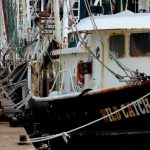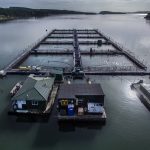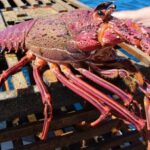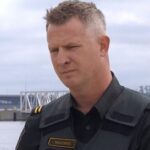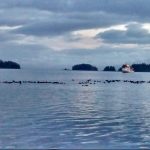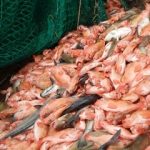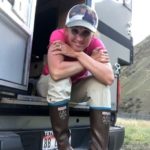Daily Archives: July 29, 2016
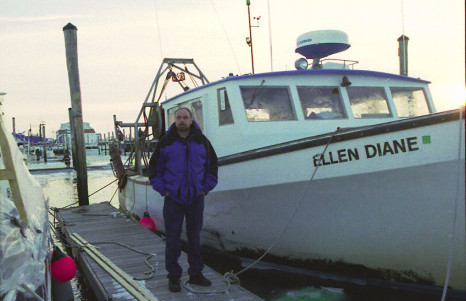
Court Rules Against Local Fishermen, Upholds Job-Killing Government Mandate
Today, the United States District Court for the District of New Hampshire dismissed the lawsuit filed by Plaintiffs David Goethel and Northeast Fishery Sector 13 against the U.S. Department of Commerce. In December 2015, the Department of Commerce ordered that fishermen who fish for cod, flounder and certain other fish in the Northeast United States not only must carry National Oceanic and Atmospheric Administration (“NOAA”) enforcement contractors known as “at-sea monitors” on their vessels during fishing trips, but must pay out-of-pocket for the cost of those monitors. This “industry funding” requirement would devastate the Northeast fishing industry, at the price of many jobs and livelihoods. The District Court’s order allows that requirement to remain in place. The Court found that the fishermen’s suit was untimely and that the requirement that monitors be funded by the fishermen was authorized by law. “I am very disappointed by this decision,” said Goethel. “I’ve made a living fishing in New England for more than 30 years, but I can’t afford to fish if I have to pay for at-sea monitors. I’m grateful to Cause of Action Institute for joining the fight, and I hope that the rule of law will win in the end.” “The fishermen in my sector can’t sustain this industry funding requirement,” said Northeast Fishery Sector 13 Manager John Haran. “They’ll have to try other fisheries, if they can keep fishing at all.” “While we respect the District Court and its decision, it appears that decision is contrary to the law and facts,” said Alfred J. Lechner, Jr., President and CEO of Cause of Action Institute and a former federal judge. “In the end, the federal government is overextending its regulatory power and is destroying an industry. We intend to study the decision and consider further action.” link 18:55

Rio History: Stingrays and Giant Mantas of the Gulf of Mexico
Yes, there are stingrays along the beaches of Padre Island …and yes, people do get stuck by them. Stingrays are actually a specialized branch-off of early sharks. They will eat almost anything they can catch, including clams, crabs and shrimp. The females are the largest, sometimes measuring six feet wide when fully mature. They are generally docile sea animals often found lying on the bottom in shallow water where they blend extremely well with their surroundings. And this is where they are most dangerous to fishermen and swimmer for they can be easily provoked if accidentally stepped on. Serrated spines and a poison gland, located near the base of the tail, can inflict a painful wound. The venom is a fairly potent nerve toxin that affects the heart and there are recorded cases of victims suffering a heart attack when stung in the chest area. According to the official autopsy, naturalist Steve Irwin’s death was caused by the trauma of the barb piercing his heart and he probably died before experiencing any effect of the ray’s poisonous venom. Does this mean all ray victims will die? No. In fact most people recover with few or any side effects. Read the rest here 18:34
Nova Scotia fishermen win back right to operate as Local 4 of Maritime Fishermen’s Union
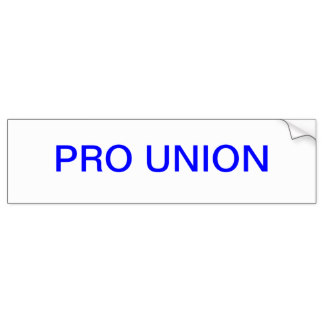 A Nova Scotia fishermen’s local has won a court case to get back its union accreditation. “It means we can get back to the business of representing our fishermen on fishermen issues instead of spending, as we did, almost two years battling to maintain our organization’s accreditation,” said Gordon Beaton, president of Local 4 of the Maritime Fishermen’s Union on Friday. That battle began when the province’s fisheries and aquaculture minister informed the local that its membership was too small and revoked its accreditation. The minister at the time was Queens-Shelburne MLA Sterling Belliveau. Beaton’s group represents about 45 people who fish in Region 1, which stretches from Pugwash to Cape North. That’s a small portion of the 600 or so fishermen in the region. Under the 2011 Fish Harvester Organizations Support Regulations, the local needed 100 members or 15 per cent of the fishermen in the area. However, the court found that Local 4 was accredited in 2002 under an earlier act. It was nearly 10 years later that the new legislation, with membership minimums, came into effect. It also included a grandfather provision for organizations accredited under the old legislation. Read the rest here 18:09
A Nova Scotia fishermen’s local has won a court case to get back its union accreditation. “It means we can get back to the business of representing our fishermen on fishermen issues instead of spending, as we did, almost two years battling to maintain our organization’s accreditation,” said Gordon Beaton, president of Local 4 of the Maritime Fishermen’s Union on Friday. That battle began when the province’s fisheries and aquaculture minister informed the local that its membership was too small and revoked its accreditation. The minister at the time was Queens-Shelburne MLA Sterling Belliveau. Beaton’s group represents about 45 people who fish in Region 1, which stretches from Pugwash to Cape North. That’s a small portion of the 600 or so fishermen in the region. Under the 2011 Fish Harvester Organizations Support Regulations, the local needed 100 members or 15 per cent of the fishermen in the area. However, the court found that Local 4 was accredited in 2002 under an earlier act. It was nearly 10 years later that the new legislation, with membership minimums, came into effect. It also included a grandfather provision for organizations accredited under the old legislation. Read the rest here 18:09
NOAA Determines Porbeagle Sharks Not Threatened or Endangered
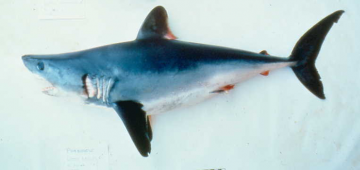 Earlier this year, we published a positive 90-day finding in response to petitions to list porbeagle sharks (Lamna nasus). A comprehensive status review, including an Extinction Risk Analysis, was completed by a group of NOAA Fisheries biologists with expertise related to porbeagle sharks. In the status review, two Distinct Population Segments of porbeagle sharks were identified – North Atlantic and Southern Hemisphere (southern Atlantic, southern Indian, southern Pacific, and Antarctic Oceans). The status review was peer reviewed by external (non-NOAA) experts. Based on the best scientific and commercial information available, including the status review report, and taking into account ongoing efforts to protect these species, we have determined that porbeagle sharks do not warrant listing at this time. Read the rest here For more information please see the Federal Register Notice 17:05
Earlier this year, we published a positive 90-day finding in response to petitions to list porbeagle sharks (Lamna nasus). A comprehensive status review, including an Extinction Risk Analysis, was completed by a group of NOAA Fisheries biologists with expertise related to porbeagle sharks. In the status review, two Distinct Population Segments of porbeagle sharks were identified – North Atlantic and Southern Hemisphere (southern Atlantic, southern Indian, southern Pacific, and Antarctic Oceans). The status review was peer reviewed by external (non-NOAA) experts. Based on the best scientific and commercial information available, including the status review report, and taking into account ongoing efforts to protect these species, we have determined that porbeagle sharks do not warrant listing at this time. Read the rest here For more information please see the Federal Register Notice 17:05
Alaska Nonprofit in Conflict with the Villagers It’s Supposed to Serve
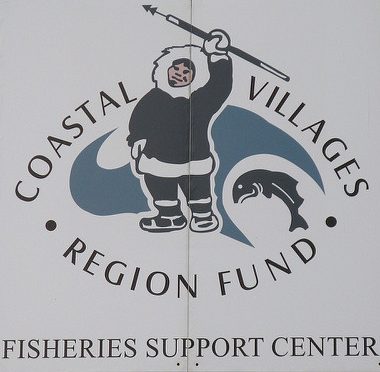 Coastal Villages Region Fund (CVRF) in Southwest Alaska is at odds with the villages it was created to serve after shutting down its commercial salmon operation. CVRF is one of six coastal development quota groups (CDQs) created by the federal government back in the Nineties to boost the Western Alaskan economy. The idea was that the CDQs would use earnings from federal fisheries, royalties, and investments to invest in the local economy by creating employment opportunities and growth, particularly surrounding small-scale commercial fisheries. They achieve this in part by offering subsidies for commercial fisheries, loans for residents to purchase boats and outboards, building or improving fish processing facilities, and improving fish handling infrastructure. Aside from commercial fishing, CDQs also create internships with business partners, offer training, and create jobs with government agencies. The CVRF board felt that one village, Quinhagak, received an unfair advantage in its subsidies for its salmon operation. They shut down the operation but still continue to offer other benefits. What the CVRF board did not anticipate was that closing this operation would have downstream effects not only on Quinhagak, but also the surrounding villages. Read the rest here 16:27
Coastal Villages Region Fund (CVRF) in Southwest Alaska is at odds with the villages it was created to serve after shutting down its commercial salmon operation. CVRF is one of six coastal development quota groups (CDQs) created by the federal government back in the Nineties to boost the Western Alaskan economy. The idea was that the CDQs would use earnings from federal fisheries, royalties, and investments to invest in the local economy by creating employment opportunities and growth, particularly surrounding small-scale commercial fisheries. They achieve this in part by offering subsidies for commercial fisheries, loans for residents to purchase boats and outboards, building or improving fish processing facilities, and improving fish handling infrastructure. Aside from commercial fishing, CDQs also create internships with business partners, offer training, and create jobs with government agencies. The CVRF board felt that one village, Quinhagak, received an unfair advantage in its subsidies for its salmon operation. They shut down the operation but still continue to offer other benefits. What the CVRF board did not anticipate was that closing this operation would have downstream effects not only on Quinhagak, but also the surrounding villages. Read the rest here 16:27
Gulf of Carpentaria trawl operators on track to cut bycatch by one third with new prawn net devices
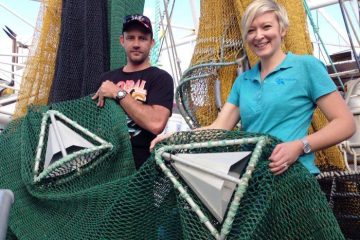 Trawler operators in the Gulf of Carpentaria believe they’re on track to achieving an ambitious target of cutting bycatch by 30 per cent in three years. The northern prawn fishery’s been offering cash incentives to promote and develop new ideas for limiting the amount of non-target species caught in prawn nets. Trawler skipper Jamie Ball admitted he was worried at first about potential prawn losses when trialling a new bycatch reduction device on board his fishing vessel, Xanadu. But after measuring and comparing catches in separate nets over a two-week period, the skipper and his crew were convinced the industry was on a winner. “I was a bit hesitant ’cause I thought ‘oh well is it losing prawn as well?” Read the story here 13:34
Trawler operators in the Gulf of Carpentaria believe they’re on track to achieving an ambitious target of cutting bycatch by 30 per cent in three years. The northern prawn fishery’s been offering cash incentives to promote and develop new ideas for limiting the amount of non-target species caught in prawn nets. Trawler skipper Jamie Ball admitted he was worried at first about potential prawn losses when trialling a new bycatch reduction device on board his fishing vessel, Xanadu. But after measuring and comparing catches in separate nets over a two-week period, the skipper and his crew were convinced the industry was on a winner. “I was a bit hesitant ’cause I thought ‘oh well is it losing prawn as well?” Read the story here 13:34
Former Fisheries Minister Hunter Tootoo evades questions about alleged sexual relationship with staff member
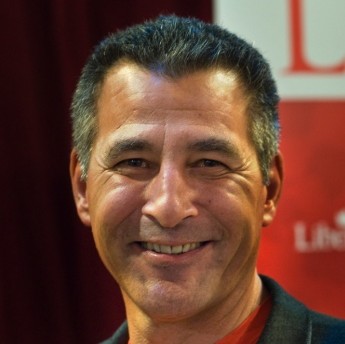 Hunter Tootoo, Nunavut MP and former fisheries minister, evaded questions this morning about allegations he had an inappropriate relationship with a female junior staff member. Tootoo abruptly resigned his cabinet post and stepped down from the Liberal caucus late in May to seek treatment for alcohol addiction. A Globe and Mail report Thursday cited anonymous sources who say Tootoo was involved in an inappropriate sexual relationship with a staff member. In an interview with Kevin Kablutsiak on CBC Nunavut’s morning show Qulliq, Tootoo did not directly address questions about the allegations. “I know that there’s lots of rumours and allegations out there,” he said. Read the rest here 13:06
Hunter Tootoo, Nunavut MP and former fisheries minister, evaded questions this morning about allegations he had an inappropriate relationship with a female junior staff member. Tootoo abruptly resigned his cabinet post and stepped down from the Liberal caucus late in May to seek treatment for alcohol addiction. A Globe and Mail report Thursday cited anonymous sources who say Tootoo was involved in an inappropriate sexual relationship with a staff member. In an interview with Kevin Kablutsiak on CBC Nunavut’s morning show Qulliq, Tootoo did not directly address questions about the allegations. “I know that there’s lots of rumours and allegations out there,” he said. Read the rest here 13:06
Stikine sockeye run is the best return in a decade
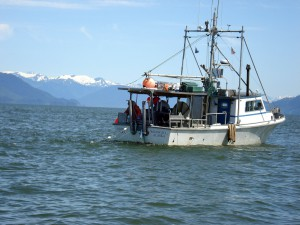 While the King salmon run for gill netters turned out to be worse than preseason estimates, the opposite holds true for sockeye. The state managed sockeye fishery began June 13. Biologists predicted a strong run but were cautious for the first few weeks to let more King salmon into the Stikine River. They limited openings to two days a week and prohibited fishing near the river’s opening. After most of the Stikine Kings passed, managers saw that the sockeye run was coming in strong. Troy Thynes is the Area Management biologist with the Alaska Department of Fish and Game based in Petersburg. “Sockeye’s are looking pretty good this year, at least locally,” Thynes said. “We’re fairly certain that we’re going to exceed preseason expectations. Especially with the Taltan River component of the run that came in really, really strong.” Stikine sockeye are shared equally between the U.S. and Canada because the river runs through both countries. It’s part of the Pacific Salmon Treaty. Canada has taken about 69,000 sockeye and U.S. fishermen 66,000. Audio, read the rest here 12:33
While the King salmon run for gill netters turned out to be worse than preseason estimates, the opposite holds true for sockeye. The state managed sockeye fishery began June 13. Biologists predicted a strong run but were cautious for the first few weeks to let more King salmon into the Stikine River. They limited openings to two days a week and prohibited fishing near the river’s opening. After most of the Stikine Kings passed, managers saw that the sockeye run was coming in strong. Troy Thynes is the Area Management biologist with the Alaska Department of Fish and Game based in Petersburg. “Sockeye’s are looking pretty good this year, at least locally,” Thynes said. “We’re fairly certain that we’re going to exceed preseason expectations. Especially with the Taltan River component of the run that came in really, really strong.” Stikine sockeye are shared equally between the U.S. and Canada because the river runs through both countries. It’s part of the Pacific Salmon Treaty. Canada has taken about 69,000 sockeye and U.S. fishermen 66,000. Audio, read the rest here 12:33
NFL Hall of Famer Warren Sapp- shark bit while lobster fishing and the photo is not for the squeamish
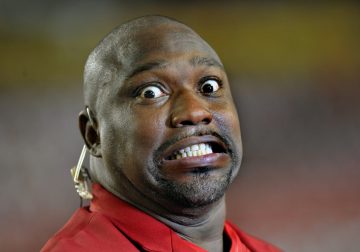 I haven’t done much (translation: any) lobstering, but I’d imagine that there’s some possibility of getting pinched by one of those large claws, which sounds like it could be painful. I’d take that any day, though, over getting bitten by a shark. Warren Sapp probably would as well, but it happened to him anyway on Wednesday. The former Buccaneers star was in the act of pulling a crustacean from waters near the Florida Keys when a shark apparently decided that he looked pretty tasty in his own right. The result was a very nasty gash on Sapp’s left arm, near his elbow. The charter company he hired that day posted a photo of the gory aftermath to its Instagram page (warning: not for the squeamish). Photo’s, read the rest here 11:57
I haven’t done much (translation: any) lobstering, but I’d imagine that there’s some possibility of getting pinched by one of those large claws, which sounds like it could be painful. I’d take that any day, though, over getting bitten by a shark. Warren Sapp probably would as well, but it happened to him anyway on Wednesday. The former Buccaneers star was in the act of pulling a crustacean from waters near the Florida Keys when a shark apparently decided that he looked pretty tasty in his own right. The result was a very nasty gash on Sapp’s left arm, near his elbow. The charter company he hired that day posted a photo of the gory aftermath to its Instagram page (warning: not for the squeamish). Photo’s, read the rest here 11:57
NY officers seize undersized lobsters from Price Chopper
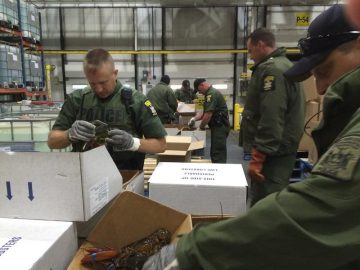 The Department of Environmental Conservation says Thursday an investigation was launched in March when officers found short lobsters at two Price Chopper stores in Binghamton. On Tuesday, officers found 820 lobsters, or 15 percent of the inventory, were undersized at the Schenectady distribution center. The retailer could be fined up to $100 for each lobster. Price Chopper spokeswoman Mona Golub said the company’s Cape Cod lobster supplier violated its product specification, and the retailer has since switched to another supplier. DEC donated the seized lobsters to the Regional Food Bank of Northeastern New York in Latham. Link 10:43
The Department of Environmental Conservation says Thursday an investigation was launched in March when officers found short lobsters at two Price Chopper stores in Binghamton. On Tuesday, officers found 820 lobsters, or 15 percent of the inventory, were undersized at the Schenectady distribution center. The retailer could be fined up to $100 for each lobster. Price Chopper spokeswoman Mona Golub said the company’s Cape Cod lobster supplier violated its product specification, and the retailer has since switched to another supplier. DEC donated the seized lobsters to the Regional Food Bank of Northeastern New York in Latham. Link 10:43
Recreational fishermen can target cod starting Monday
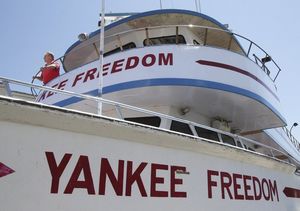 As of Monday, recreational anglers will get a chance to reacquaint themselves with the much-coveted Gulf of Maine cod when federal fishing restrictions for the species are lifted until the end of September. The bag limit for the iconic species, whose stock NOAA Fisheries maintains is in freefall, will be one cod per fisherman per day. (Anglers are mentioning the huge numbers of cod they have to throw back.) The anglers’ comments are representative of the overall narrative of local fishermen — commercial, recreational and lobstermen — who continue to insist they are seeing far more cod in the water than the scientists at NOAA Fisheries say are there. It is a disconnect that, in many ways, has come to define the plight of the commercial fishing industry and its lack of trust in the science that comes out of NOAA Fisheries. They hear one thing in the stock assessments. They see another with their eyes when they’re out on the water. Read the story here 09:16
As of Monday, recreational anglers will get a chance to reacquaint themselves with the much-coveted Gulf of Maine cod when federal fishing restrictions for the species are lifted until the end of September. The bag limit for the iconic species, whose stock NOAA Fisheries maintains is in freefall, will be one cod per fisherman per day. (Anglers are mentioning the huge numbers of cod they have to throw back.) The anglers’ comments are representative of the overall narrative of local fishermen — commercial, recreational and lobstermen — who continue to insist they are seeing far more cod in the water than the scientists at NOAA Fisheries say are there. It is a disconnect that, in many ways, has come to define the plight of the commercial fishing industry and its lack of trust in the science that comes out of NOAA Fisheries. They hear one thing in the stock assessments. They see another with their eyes when they’re out on the water. Read the story here 09:16
New York State DEC Adopts Regulations for the Atlantic Ocean Surfclam Fishery
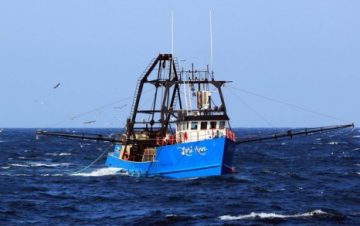 New York State Department of Environmental Conservation (DEC) Commissioner Basil Seggos today announced the adoption of regulations for the Atlantic Ocean surfclam fishery to ensure consistency with the harvest management measures of the State’s Atlantic Ocean Surfclam Fishery Management Plan (FMP). The regulations take effect immediately. “These regulations will help promote the sustainability of the surfclam fishery and economic viability of its traditional New York-based fishing interests by ensuring that the distribution of fishing quota is fair for all participants,” Commissioner Seggos said. An apparent loophole in the surfclam vessel replacement regulations has allowed one or more vessels to catch more than one IFQ in a year. This regulation closes this regulatory loophole that has allowed multiple individual fishing quotas to be fished by one or more vessels which has negatively impacted fishing businesses with vessels limited to one individual fishing quota. Read the rest here 08:24
New York State Department of Environmental Conservation (DEC) Commissioner Basil Seggos today announced the adoption of regulations for the Atlantic Ocean surfclam fishery to ensure consistency with the harvest management measures of the State’s Atlantic Ocean Surfclam Fishery Management Plan (FMP). The regulations take effect immediately. “These regulations will help promote the sustainability of the surfclam fishery and economic viability of its traditional New York-based fishing interests by ensuring that the distribution of fishing quota is fair for all participants,” Commissioner Seggos said. An apparent loophole in the surfclam vessel replacement regulations has allowed one or more vessels to catch more than one IFQ in a year. This regulation closes this regulatory loophole that has allowed multiple individual fishing quotas to be fished by one or more vessels which has negatively impacted fishing businesses with vessels limited to one individual fishing quota. Read the rest here 08:24


































